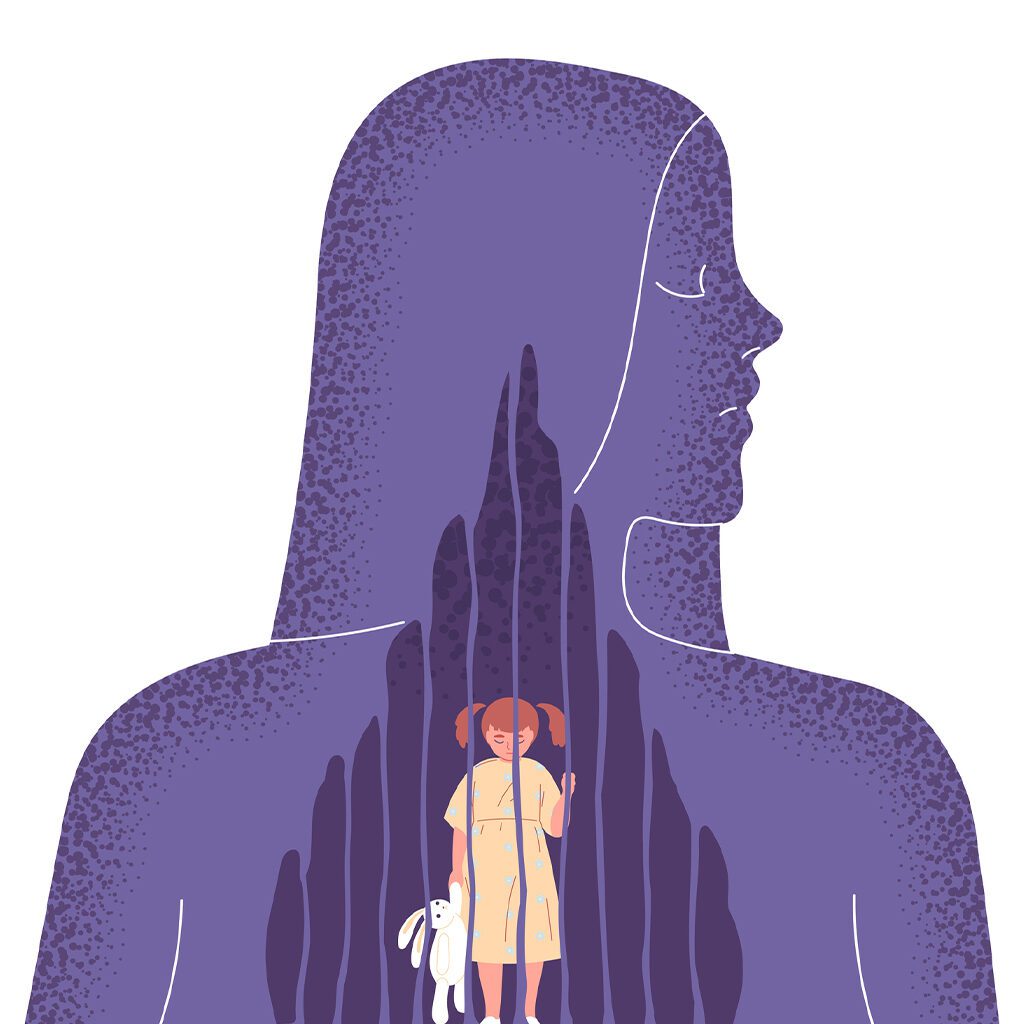We teach our kids to stay away from hot stoves and to look both ways before crossing the street. But while their safety is our priority, we may plan to hold off on some more serious conversations – like those about sexual violence – until we feel they’re old enough to understand. (And the truth is, some of us don’t even do it then, because it’s a tough topic.) In reality, the best way to protect our kids is to teach them early what is right and wrong, should they find themselves in harm’s way.
When and How to Begin
Before the age of 18, 1 in 6 boys and 1 in 4 girls are sexually abused. Let that sink in. A staggering statistic, sexual abuse is significantly more common than many parents know. Beyond that, 93% of young victims know the perpetrator. But as scary as these statistics are, there are steps you can take to educate your child from a young age so that they know what is – and more importantly what is not – okay.
Start by teaching your child the proper names for body parts, including private parts. “Prevention education should start in preschool,” says Kristen Pavlik McCallie, executive director of the Children’s Advocacy Center of Hamilton County. “There is a lot of discomfort in our society about identifying body parts with their real names, but it is extremely important, should a line ever be crossed, for a child to be able to communicate effectively.”
Young kids should also understand that certain body parts are private. “A good way to explain this is to say that no one other than your parents or doctor should see body parts that are covered by your bathing suit,” says McCallie.


It’s also important that young children recognize that it’s never appropriate to look at or touch another person’s private parts, even if they ask. This is a big part of the conversation that can be easily forgotten, and it’s frequently one of the first forms of sexual abuse.
Making your child comfortable enough to talk about secrets is another key step. “Children need to know that there are no body secrets from parents,” explains Farlie Chastain, licensed clinical social worker and director of social services at Parkridge Valley Child & Adolescent Campus. “It’s important to create an open, safe environment in which a child feels comfortable talking about incidents they felt were ‘weird’ or ‘strange.’ Such situations can be confusing to children, as they may perceive the incident as something that felt good or tickled,” says Chastain.
Lastly, reassure your child that they’re not at risk of getting in trouble. Many young kids are afraid of upsetting their parents or being punished, and perpetrators prey on this fear. If your child knows they can talk to you and you won’t be mad, they are more likely to open up. “Children can sense who their safe people are,” explains Karisa Kaye, marriage and family therapist/sex therapist with I Love Us Relationship & Intimacy Counseling Center. “If there’s any kind of shaming or explosiveness from their caregiver, most children will not disclose when they are being abused or mistreated for fear of more shame or punishment.”
Understanding the Difference in Terms
Sexual Abuse
Also referred to as molestation, sexual abuse is undesired sexual behavior by one person upon another, often by using force or taking advantage of the victim. This term is usually reserved for contact between a child and an adult or other person who is significantly older or in a position of power. It can include touching, making a victim look at sexual body parts, or forcing them to watch sexual activity.
Sexual Assault
This term refers to an act in which a person purposely touches another person without their consent or coerces them or physically forces them to engage in a sexual act against their will. Sexual assault includes everything from rape to unwanted touching, kissing, groping, or forcing a victim to touch the perpetrator in sexual ways.
Sexual Violence
An all-encompassing term, sexual violence refers to any sort of sexual act by violence or coercion, and includes both sexual abuse and sexual assault, among others. Everything from insistent pressure or threats to the nonconsensual sharing of explicit images or exposure of genitals falls under this umbrella.
Talking to Young Teens



As your children transition into their teenage years, the conversation needs to continue, but the focus will shift a bit. Whether they’re entering relationships themselves or learning from friends or media, it’s likely they’re growing curious about everything a relationship entails. One of the biggest ways you can help them during this phase is by teaching them the difference between healthy and unhealthy relationships.
Remind them that a healthy relationship comes from partners that are open and honest with each other. “Healthy relationships are based on mutual respect and shared power,” says Kaye. “In an ideal world, we are talking about and modeling healthy relationships and boundaries from the very beginning for our children.”
Relationships can become unhealthy when boundaries aren’t discussed or respected. Make sure your child understands that sexual activity should never be used as a tool of power or control.
Beyond that, talk to them about specific warning signs of abuse – demanding explicit photos, bargaining for sex, or making someone feel insecure for not wanting to be sexually active is never okay.
Should your teen ever find themselves in an uncomfortable situation, remind them they can always ask for help without fear of repercussions. “The thing that science teaches us is that children who have faced sexual violence are most likely to become successful adults if they have at least one safe, nurturing adult who believes them,” says McCallie.
Continuing the Conversation into Adulthood
“If you’ve maintained an open line of communication about sexual violence with your child, the conversation should mature as the child matures,” explains Chastain. Consider bringing up events in the news or even discuss problematic scenes in television shows or movies. “There’s a balance to be found in how we check in with our children and how we gently bring up difficult topics,” says Kaye. Talk about hypothetical situations they might find themselves in once they’re on their own. “Conversations should be open-ended, and questions should be answered candidly. Relevant information is easier to hear than an abruptly introduced lecture, so don’t be afraid to take the opportunity to address situations as they arise. Be willing to share personal experiences or stories from people you know – especially ones that demonstrate important safety lessons,” says Chastain.
These stories and hypotheticals can also be effective in teaching your children about the importance of bystander intervention. This idea of stepping in for friends or strangers to de-escalate situations that could lead to sexual assault is enormously important. “Talk about caring for friends and how to be a good friend,” says Chastain. “Teaching a young adult to care for and look out for their peers relays that you trust them to do the right thing.” Share specific practices that lead to effective bystander intervention, like the buddy system.
Lastly, talk to your children about consent. “Hold your children accountable when it comes to asking for consent,” says McCallie. “And remind them that even if consent is granted once, it doesn’t mean it’s granted forever. A person has the right to say no at any time.”
As much as we want to protect our children from sexual violence, statistically, there’s a real chance they’ll face it at some point before they turn 25. Keep the dialogue open – ask the hard questions and be supportive and understanding when they share their truths. If they have experienced sexual violence, encourage them to talk about their experience with a therapist, who can help them comprehend their thoughts and emotions. Healing takes time, but it will be considerably easier knowing you are there for them the whole way.



Kristen Pavlik McCallie
Executive Director, Children's Advocacy Center of Hamilton County



Farlie Chastain
Director of Social Services, Parkridge Valley Child & Adolescent Campus



Karisa Kaye
Marriage and Family Therapist/Sex Therapist, I Love Us Relationship & Intimacy Counseling Center

